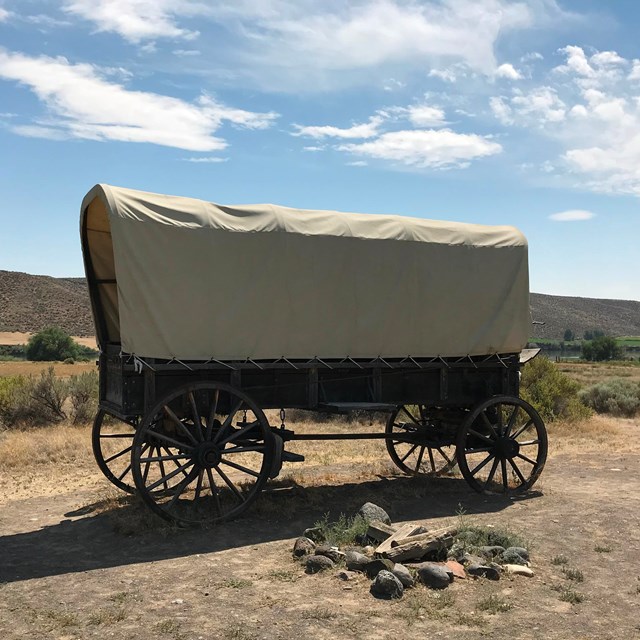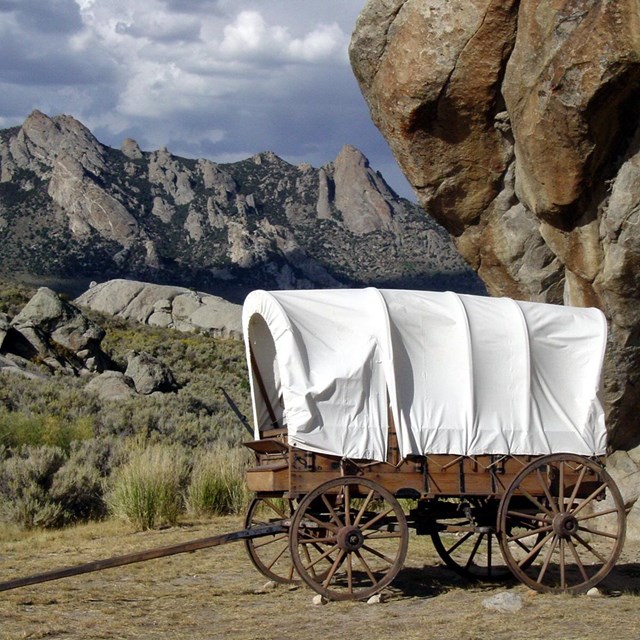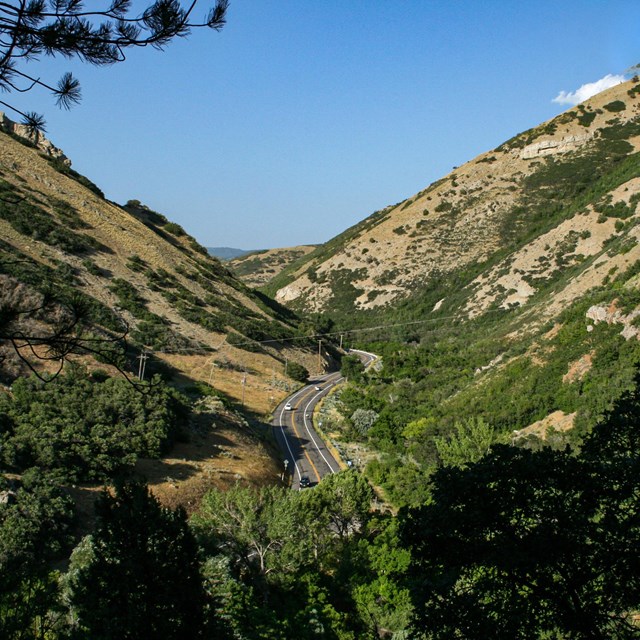Last updated: March 28, 2022
Article
Chapter 1: Race, Slavery, and Freedom - The Contagion of Liberty
Sweet Freedom's Plains
African Americans on the Overland Trails 1841-1869
By Shirley Ann Wilson Moore, PhD.
For the National Park Service
National Trails Regions, 6, 7, & 8
Introduction/Table of Contents
Chapter 1 Sections
- The Early Black Presence
- The Question of Race
- The Evolution of Their Status
- The Contagion of Liberty
- Permanent, Hereditary Chattel: A Snapshot of Antebellum Slavery in the South, Indian Territory, and Border States
- Northern “Unfreedom”
- The Nature of Freedom in the West
- Utah: Slaves and Saints
- No Rights to be Respected
When the American Revolution plunged colonists into the War for Independence, white American revolutionaries, proclaiming themselves slaves to British oppression, compared their struggle against British political and economic control to the plight of the blacks they themselves held in bondage. Their wartime declarations of egalitarianism and their rhetoric of inalienable rights often were extended to include black people. Revolutionary zeal even led some white Americans to propose the abolition of slavery altogether.22
The contagion of liberty that gripped white Americans in the Revolutionary era also spread to the African American population. Blacks embraced the egalitarian philosophy and viewed the war as their pathway to freedom. Historian Gary Nash has called the American Revolution the “largest slave uprising in our nation’s history.” Regardless of the uniform they might wear, African Americans fought to liberate themselves. Ten to 20 times more blacks (mostly slaves and some free), however, allied themselves with the Loyalists forces rather than with the Patriots. Many blacks perceived Britain to be more advanced in the anti-slavery fight. This perception was fueled in part by events that had taken place in England as revolutionary fervor was building in America. The 1772 Somersett decision (sometimes spelled Somerset) gave black and white abolitionists cause for optimism. The closely-watched case involved a slaveholder who had returned to Great Britain from Virginia with his slave, and wanted to sell him to a plantation in the Caribbean. The court handed down a carefully worded decision that denied slave-owners living in Britain the right to deport their slaves back to the colonies. The ruling did not affect the 14,000 black slaves held in Britain, nor did it abolish slavery throughout the British Empire as some mistakenly believed—that did not happen until 1833. Nonetheless, anti-slavery forces in Britain and America hailed the Somersett decision as a signal of slavery’s imminent demise.23
African Americans also had other, pragmatic reasons for allying themselves with the British during the Revolution. In an effort to quell the uprising in its early stages, royal officials had established lines of informal cooperation with slaves and offered to grant perpetual freedom to any slave or indentured servant who left his or her owner to join the British forces. By 1774 in Virginia, British officials had begun to consider exploiting the tension between slaves and their owners, and to encourage slave rebellions as a strategy to preserve British rule. In 1775, John Murray, the fourth earl of Dunmore and Virginia’s last royal governor, promised freedom to all slaves and indentured servants who enlisted in the British army. Thomas Jefferson estimated that nearly 30,000 blacks in Virginia alone fled to the British forces in response to this decree. In other parts of the South and in the North, thousands of slaves escaped to the British whenever they were nearby.24
White Americans denounced the British for inciting slave uprisings and forbade black enlistment in state militias and the army. However, in light of the overwhelming black response to the Dunmore Proclamation, and faced with mounting troop shortages, George Washington lifted the ban on black enlistment in the Continental Army. American fighting forces actively began to recruit African Americans. Historian Benjamin Quarles noted that black loyalties were not to a “place nor to a people, but to a principle.” Nowhere was this more evident than in the ranks of Lord Dunmore’s “Ethiopian Regiment” who fought alongside British troops wearing uniforms emblazoned with the motto, “Liberty to Slaves.”25 After winning independence, however, most white Americans quickly abandoned their egalitarian ideals in favor of the economic and social practicalities of nation-building.
22 For the impact of Revolutionary rhetoric on abolitionism during the war, see Leon F. Litwack, North of Slavery: The Negro in the Free States, 1790-1860 (Chicago: University of Chicago Press, 1961), 5-7; Horton, “From Class to Race in Early America,” 637-638; and Gary B. Nash, Race and Revolution (Madison: Madison House, 1990), 3-20, 58-59, 91-110. For a meticulous analysis of the impact of Revolutionary ideology and the problem of slavery, see Jordan, White Over Black, especially 269-342
23 Nash, Race and Revolution, 57-59; Gary B. Nash, “African Americans in the Early Republic,” Magazine of History, 14, no. 2 (Winter 2000): 12. In the case of Somersett v. Stewart, the slave James Somersett sued for his freedom and received it because his owner had brought him from Virginia to England and then attempted to ship him to Jamaica. In the 1772 ruling, the English court held that British laws did not uphold slavery. The court ruled that slavery was so “odious” a matter that its existence and protection required positive law; that is, laws that were specifically passed by the government and in the law books. The court decided that no slave could be removed forcibly from Britain and sold. This ruling heartened British anti-slavery forces and led many blacks and whites on both sides of the Atlantic to believe, mistakenly, that slavery had been abolished throughout the British Empire. In reality, it did not grant liberty to blacks held in bondage, nor did it change the status of slaves in Britain’s overseas colonies. For details about the complexities and implications of the Somersett case, see George van Cleve, “‘Somerset’s Case’ and Its Antecedents in Imperial Perspective,” Law and History Review, 24, no. 3 (Fall 2006): 601-645; Jerome Nadelhaft, “The Somersett Case and Slavery: Myth, Reality, and Repercussions,” The Journal of Negro History 51, no. 3 (July 1966): 193-208; Deirdre Coleman, “Janet Schaw and the Complexions of Empire,” Eighteenth-Century Studies 36, no. 2 (Winter 2003): 169-193; and Karen Robbins, “Power among the Powerless: Domestic Resistance by Free and Slave Women in the McHenry Family of the New Republic,” Journal of the Early Republic, 23, no. 1 (Spring 2003): 47-68.
24 Nash, Race and Revolution, 59-62; Thomas Jefferson to William Gordon, July 16, 1788, in The Papers of Thomas Jefferson, vol. 13, ed. Julian P. Boyd (Princeton: Princeton University Press, 1953-1958), 364; Woody Holton, “‘Rebel against Rebel’: Enslaved Virginians and the Coming of the American Revolution,” The Virginia Magazine of History and Biography 105, no. 2 (Spring 1997): 157-192; Charles W. Carey, Jr., “‘These Black Rascals’: The Origins of Lord Dunmore’s Ethiopian Regiment,” Virginia Social Science Journal, 31, (1996): 65-77.
25 Nash, Race and Revolution, 60-61; Carey, “These Black Rascals,” 61-72; Benjamin Quarles, The Negro in the American Revolution (Chapel Hill: University of North Carolina Press, 1961), vii. “Liberty to slaves” quote in Holton, “‘Rebel against Rebel’,” 182.




